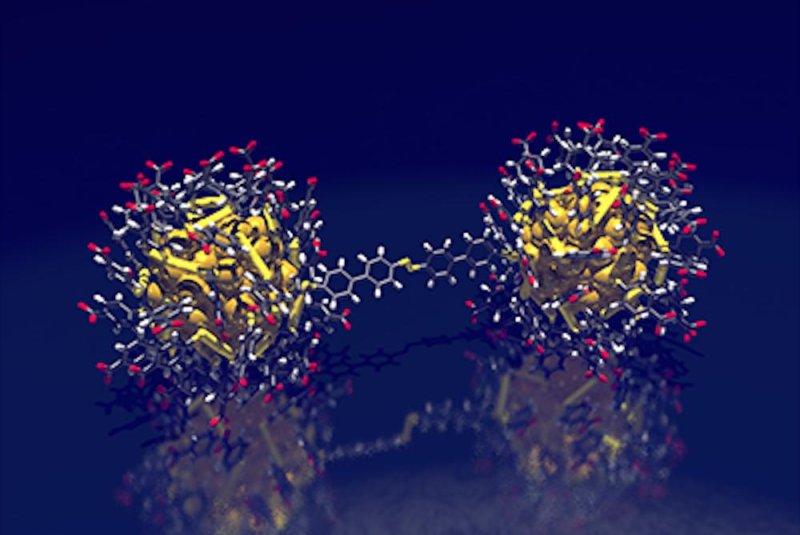A pair of gold nanoparticles linked by a molecular bridge. Photo by Suomen Akatemia/Academy of Finland
JYVäSKYLä, Finland, Sept. 22 (UPI) -- Bling isn't just for athletes and musicians. Recently, a team of engineers got in on the game, only on a much smaller scale.
A group of scientists at the University of Jyväskylä in Finland forged short chains of gold nanoparticles with unparalleled precision. The cores of these well-defined nanostructures are composed of just a few hundred metal atoms.
Researchers say their new jewelry is ideal for the study of interactions between light and matter in metallic nanostructures. The gold chains can also be used to analyze surface plasmons, delocalized electrons that oscillate on the interface between two different materials.
The creation of nanoparticles and nanostructures is often imprecise, yielding a variety of shapes and sizes. Not so for Jyväskylä engineers.
"The approach we use is exceptional in the sense that after purification we get only a single type of a nanoparticle," researcher Tanja Lahtinen said in a news release. "These nanoparticles have a specified number of each atom and the atoms are organised as a well-defined structure. It's essentially a single huge molecule with a core of gold."
The engineers fixed together the uniform nanoparticles with molecular bridges, forming pairs, rings and chains. When the nanostructures interact with light, electron clouds from one particle become coupled with those from another. The phenomenon alters the electromagnetic field surrounding structures, as well as the forces exerted on the molecular bridge.
"Studying nanostructures that are well-defined at the atomic level allows us to combine experimental and computational methods in a seemless way," explained researcher Lauri Lehtovaara. "We're aiming to understand light-matter interaction in linked metallic nanostructures at the quantum level. Deeper understanding is essential for development of novel plasmonic applications."
The new research was published this week in the journal Nanoscale.
Researchers say an improved understanding of light-matter interactions in metal nanostructures could help them design better chemical sensors and catalysts.















